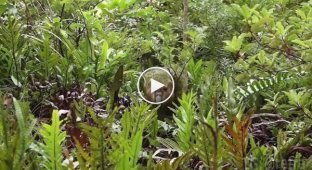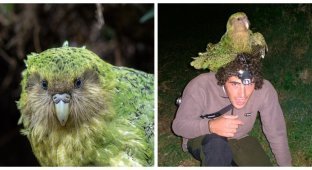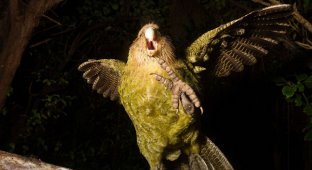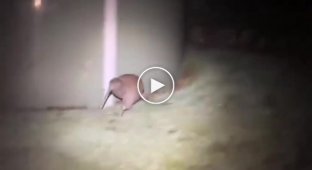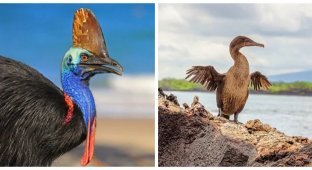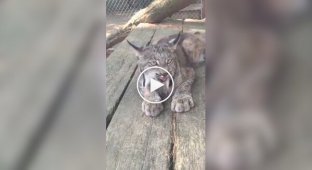Kakapo: Rare Flightless Parrots That Scientists Are Trying to Save (14 photos + 1 video)
Kakapo are the largest parrots in the world and the only flightless birds. These nocturnal birds are native to New Zealand. 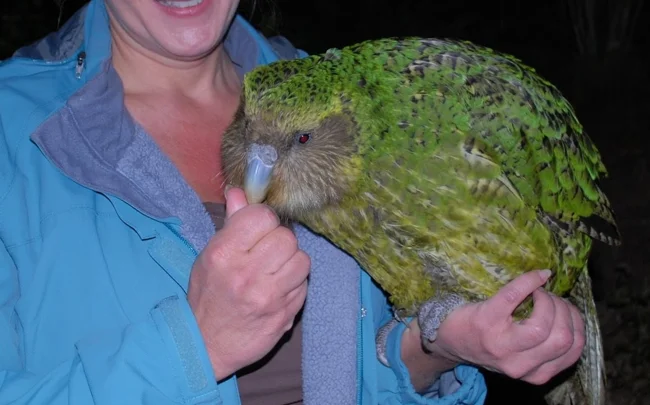
If all the bad guys with bites and poison are in Australia, then where do the good guys live? Why, right here, right next door, in New Zealand! For 80 million years, these islands lived peacefully in complete isolation, without land-based predators. All of New Zealand has become a huge comfort zone, where you can relax and just eat fruit. This is how the kakapo came to be—the biggest, kindest, and silliest parrot on Earth. 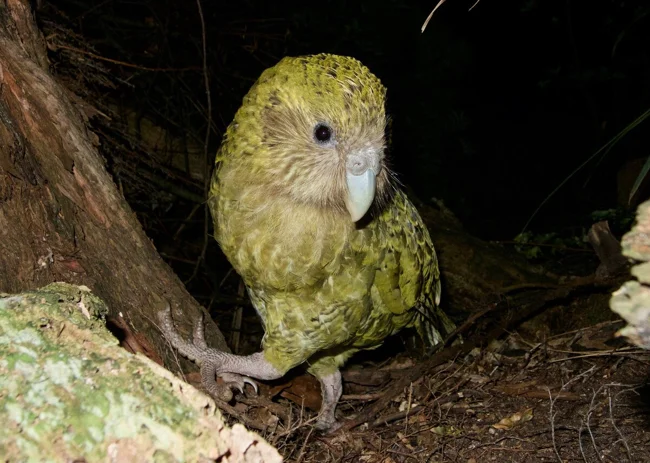
Meeting one at night in the forest can be a bit creepy...
But, unfortunately, these guys are first in line for extinction. Today, hundreds of biologists are working to prevent these big, kind-hearted birds from disappearing completely. But are they succeeding? 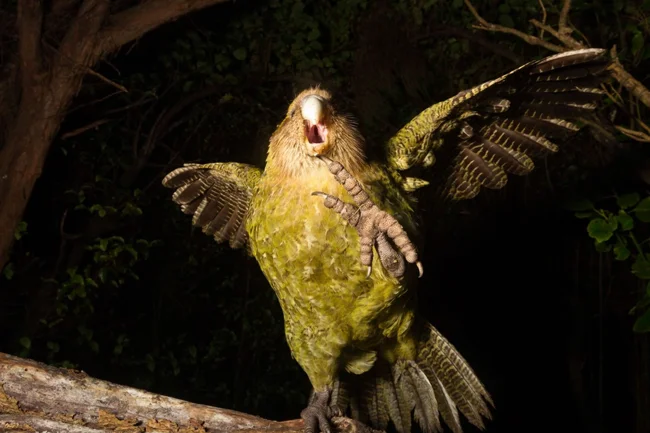
Run, fools!
The kakapo, also known as the owl parrot, belongs to the order Psittacidae, but is completely unlike its noisy relatives. In fact, the kakapo doesn't even look much like a bird! It lacks one of the key features of avian anatomy—the keel. The keel is a special bone located in the front of the chest in most birds, to which the pectoral muscles, which in turn are responsible for flight, are attached.
Consequently, owl parrots cannot fly at all. And they have not learned to run like ostriches—the birds have virtually no natural enemies.
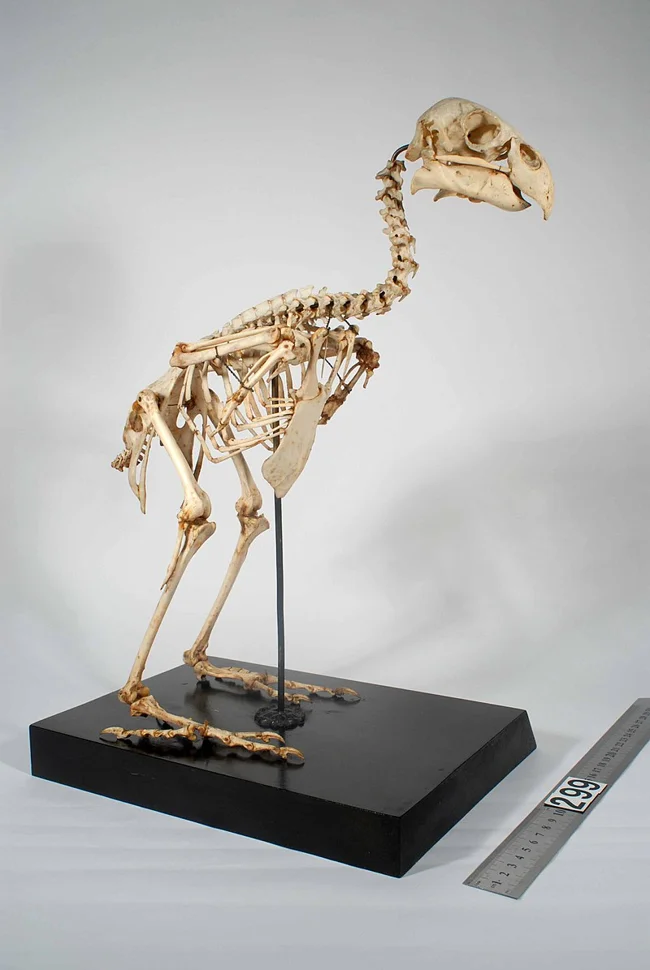
Kakapo skeleton. As you can see, its sternum is completely flat, without a keel.
Following their increased mobility, kakapos' metabolic rate has slowed. This is a consequence of their sedentary terrestrial lifestyle, since most of their energy is expended on flight. But since this function is inhibited in owl parrots, there's no point in boosting their metabolism. You could go the other way: store fat for a rainy day and gain weight. Kakapos have become the plumpest parrots in the world: males can easily gain up to 4 kilograms!
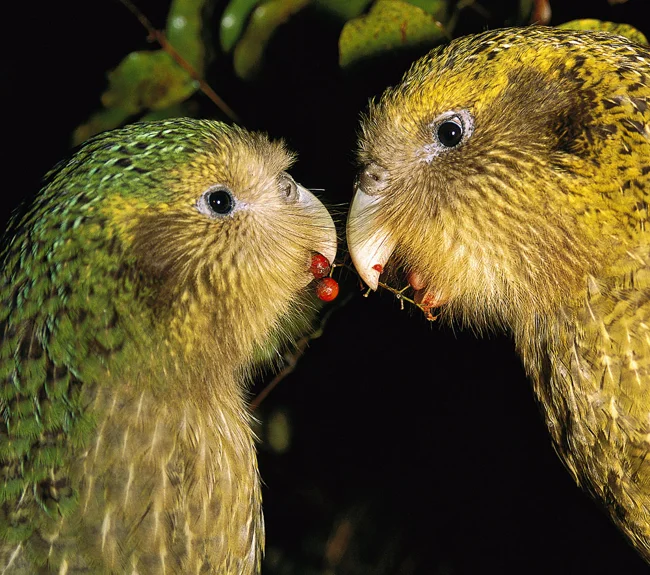
Honey, it's time for us to exercise.
Typically, they gain such a significant amount of weight on a low-calorie diet of grass, ferns, and fruit. It's all about quantity: unless you're being stalked by a toothy beast, you can eat as many treats as you like and even bother searching for the juiciest fruits. For this last species, the kakapo has developed a keen sense of smell—another unusual trait for birds. The vast majority of birds have an extremely weak sense of smell.
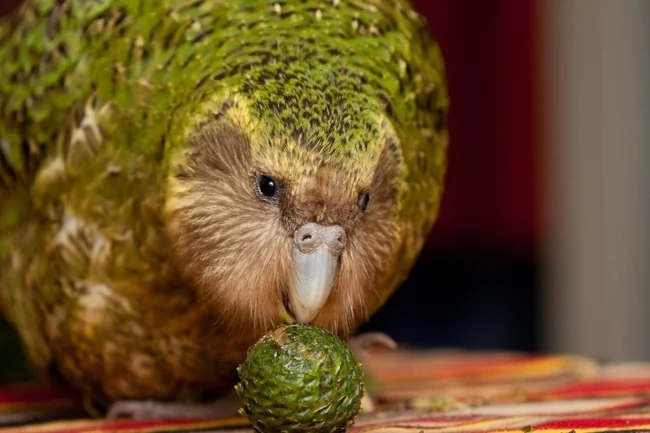
Look how prominent the nostrils on its face are. They have many more receptors there than other bird species.
The only birds that have any influence on the kakapo population are local owls and eagles, but these friendly creatures easily hide from them in the treetops—their clawed feet and strong beak, which act as a third leg, allow them to climb anywhere. Birds of prey have such a negligible impact on the lives of owl parrots that they've become true record-breakers in longevity. A 100-year anniversary isn't all that uncommon for them!
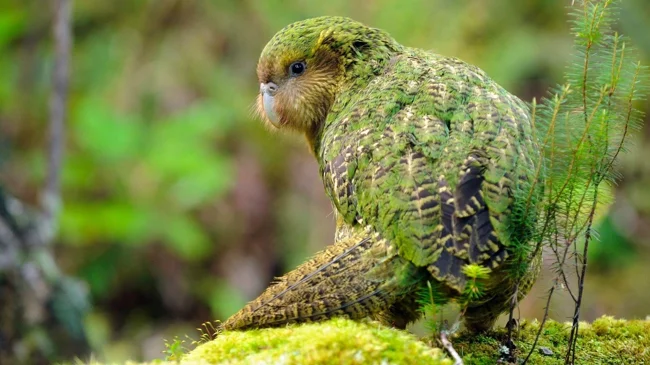
To be fair, kakapos are actually quite good at camouflage.
For millions of years, kakapos lived happily ever after in New Zealand. And they would have continued to do so, but humans arrived and ruined everything. What do you think humans did to these large, plump, and very trusting birds? Yes, they ate them all, and their moss-soft feathers were used to make cool capes. The parrots tried their tried-and-true tactic of hiding in the treetops, but were hunted there by predators introduced from the mainland—cats, ferrets, and rats. Kakapos have a strong musky scent, making them easy to spot even in the densest undergrowth.
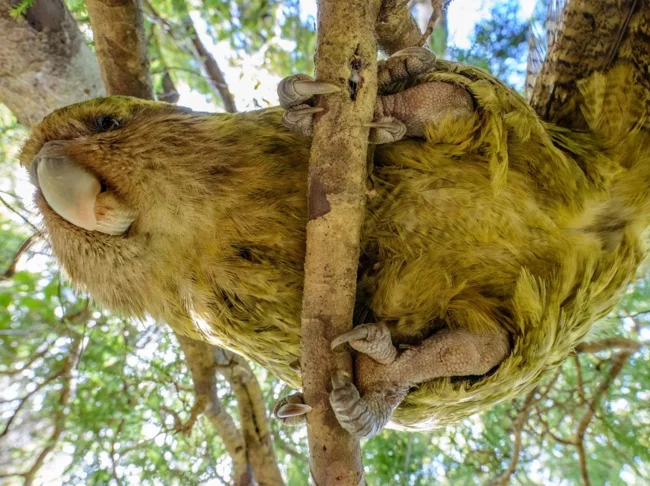
We bet you've never seen a kakapo from this angle!
The parrots were so defenseless that their numbers dropped from tens of thousands to double digits. At the peak of their extinction in 1995, only 49 individuals remained—a catastrophe for any species! Scientists expended incredible effort to save the species, but by 2005, the parrot population hadn't even doubled. During the rescue operation, three problems were discovered.
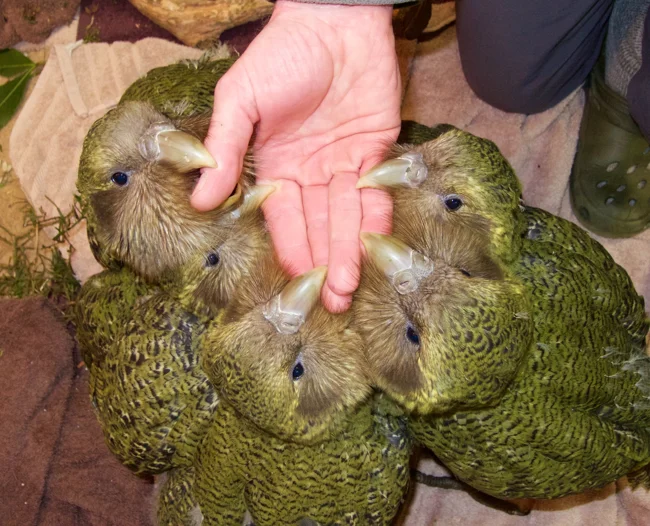
Now they'll get a taste for meat, and biologists will have problems.
First, invasive predators are consuming much of the recovery effort. For a rescue program to be worthwhile, all the invaders must first be eradicated, and that's extremely difficult. So far, several small islands near New Zealand have been cleared of them, but they've become very prevalent on the main island.
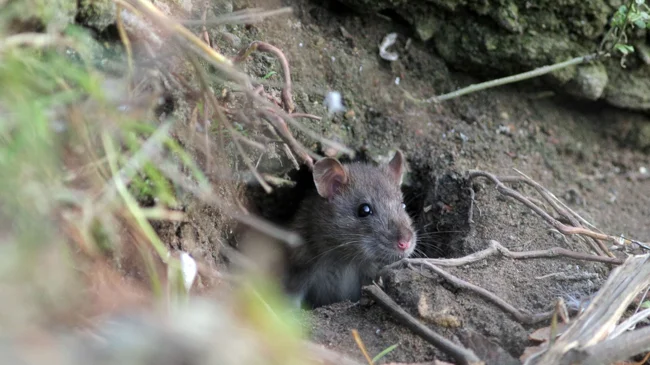
In New Zealand, the invasive species situation is so dire that even schoolchildren hunt rats! Programs are regularly created where people are paid a small amount for each invasive species destroyed.
Secondly, there's the difficulty of raising offspring. The kakapo's normal diet is completely unsuitable for their offspring, so the birds must wait for the fruiting of the local rimu conifer. Only the fruit of this tree provides the kakapo with enough nutrients to successfully breed. And it only bears fruit every 2-5 years!
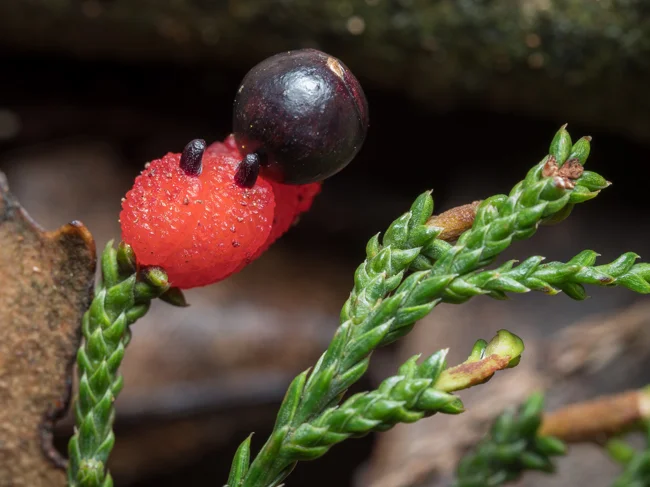
The very same fruits of the rimu tree. Delicious even by human standards!
But what hinders the scientists' work most is the fact that the kakapos are completely unaware of the dire situation. Unlike other parrots, owls don't form pairs: males simply gather in a group, display, and the female chooses the most friendly one. Under normal conditions, such mate selection isn't a problem. But when scientists are scrutinizing every genotype, the display system becomes a problem. Due to inbreeding, more than half of the eggs simply fail to hatch, and the embryos die due to internal pathologies.
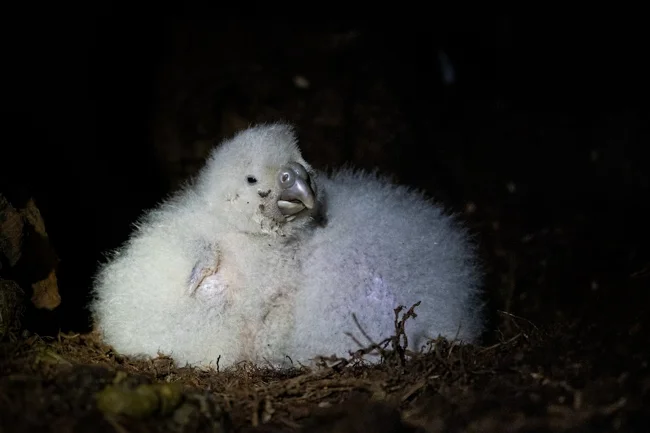
And in New Zealand, snow with a beak.
However, there's a silver lining to the whole thing. Ornithologists and rescuers have developed a procedure for artificially inseminating females. Now they strictly control reproduction, selecting pairs of parrots that are as unrelated as possible for insemination. The number of fetal deaths has dropped sharply.
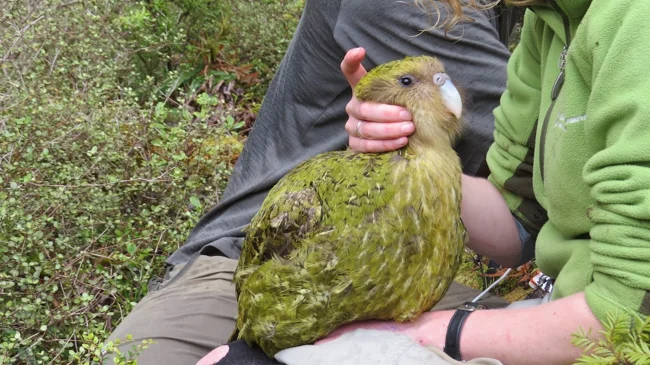
The research subject has lived with the scientists for so long that he feels like a researcher himself.
The mortality rate of young has also been reduced. Since even the natural fathers have never been involved in raising the offspring, caretakers have taken on the role of caring fathers. Many kakapo nests have cameras installed, allowing people to monitor the condition of the young and, if necessary, provide additional food for them and their mother.
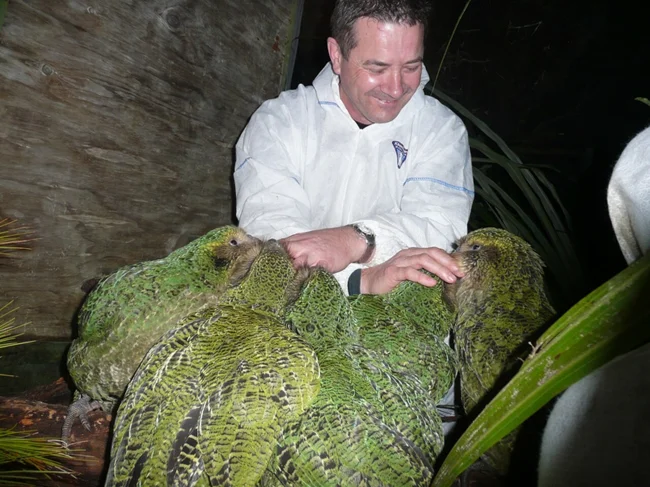
These parrots are incredibly lucky. They have a dad!
The current kākāpō population numbers around 250 individuals, but a baby boom is expected in 2026. Rimu trees across the country are preparing to bloom, which means kākāpō will delight the world with a new batch of babies! Perhaps not all is lost!












